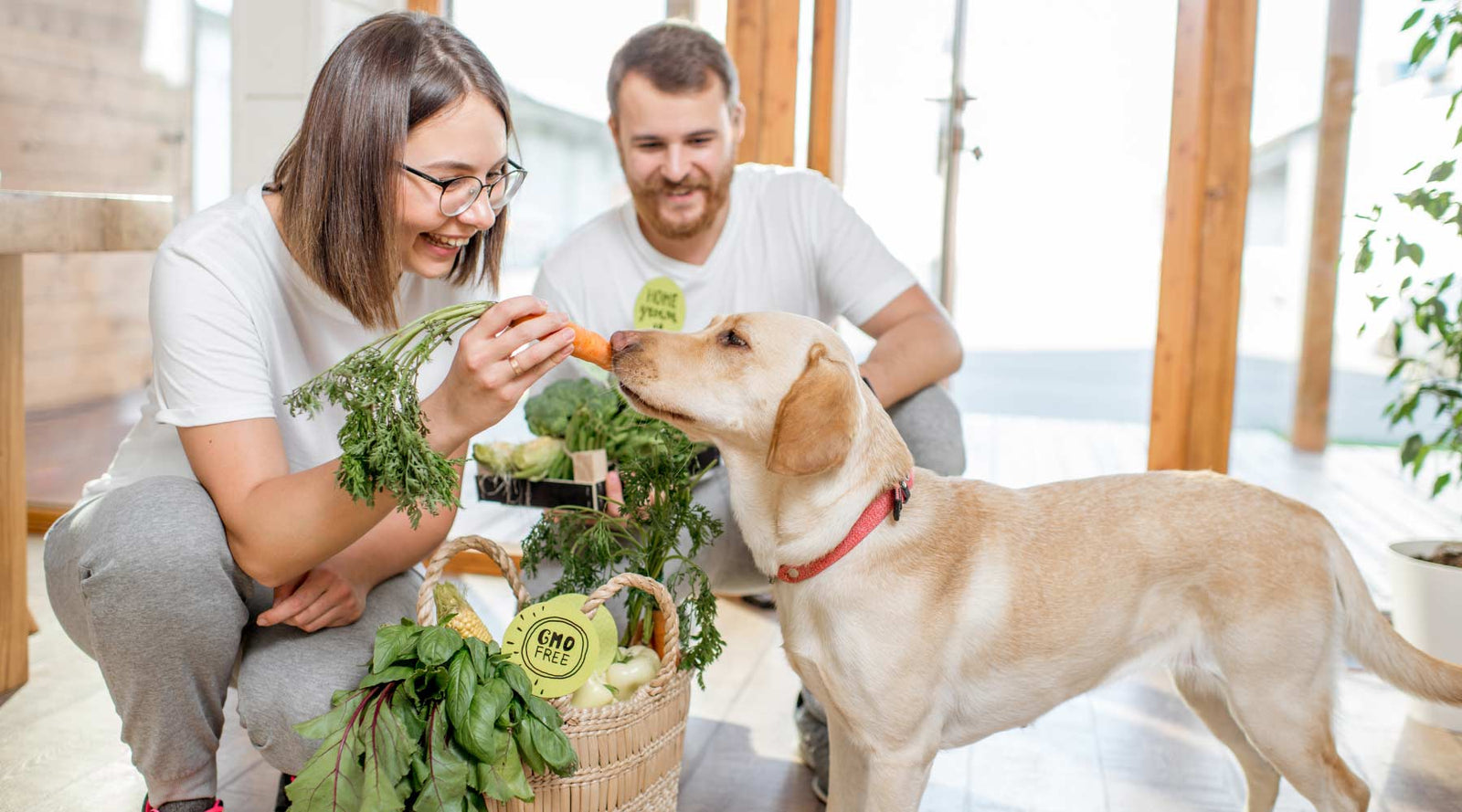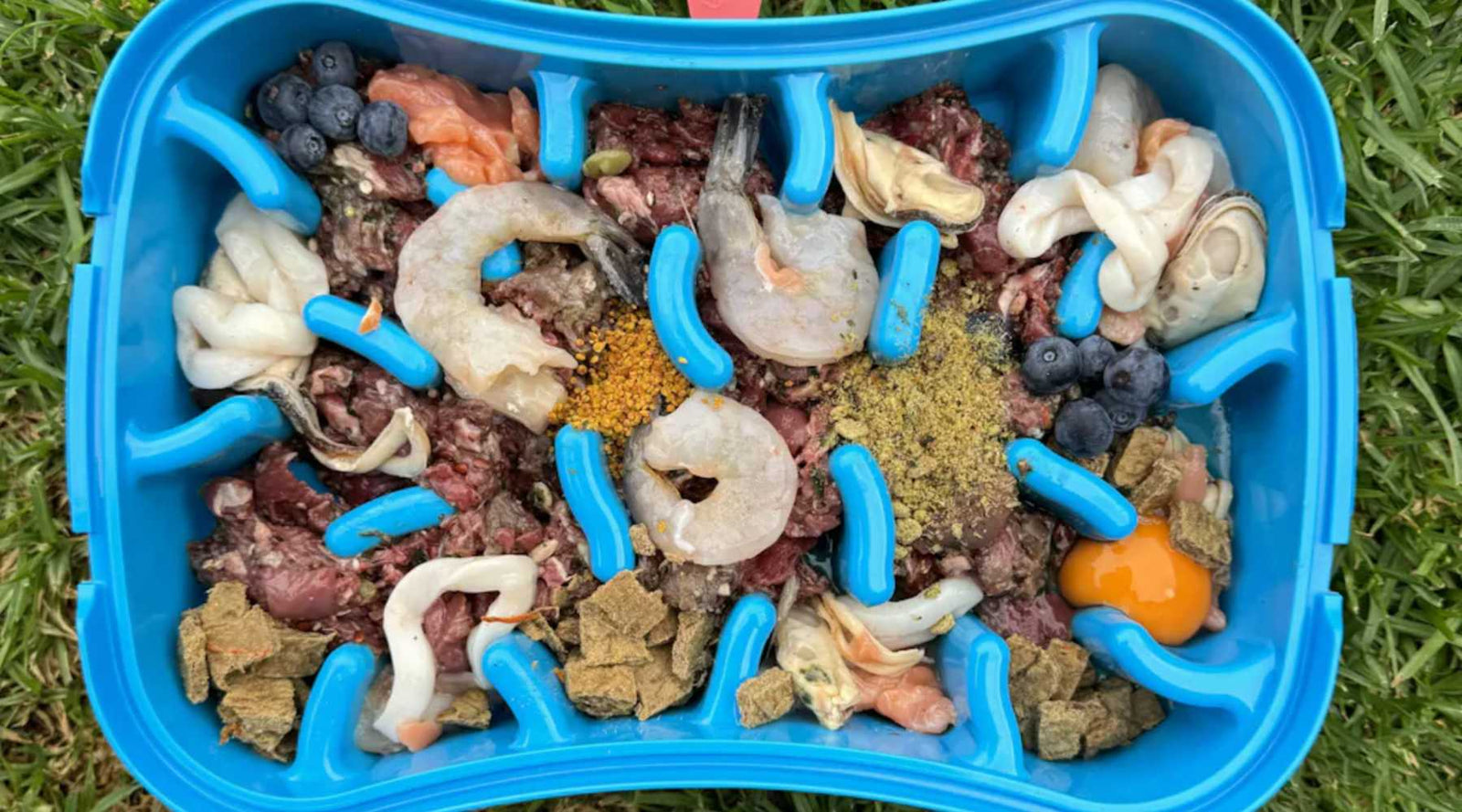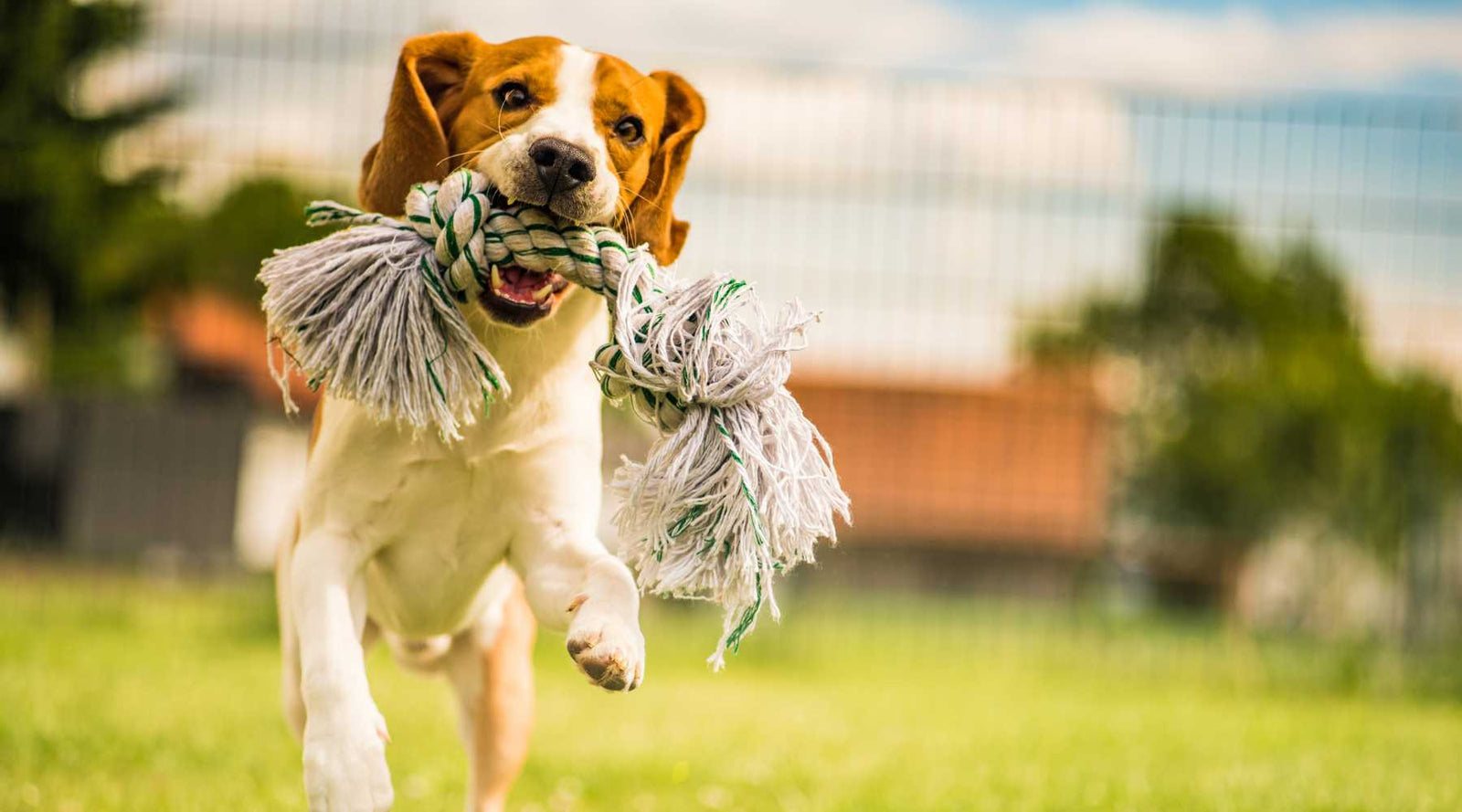Dogs are known as "man's best friend" for a reason. They are loyal, loving, and always happy to see you. But what about their diet? Depending on their life stage, dogs need the right food to stay active and live a happy, healthy life. This blog post will discuss the essential things you need to know when feeding your dog at mealtimes. We will cover everything from kibble to raw diets so that you can make the best decision for your furry friend!
What are the basic nutritional requirements of a dog?

Mealtimes is the most exciting time of the day for your dog. A dog's nutritional needs are similar to a human's: make sure their diet contains the protein, fat, and carbohydrates they need, such as poultry, pork, beef, fish, meaty bone (raw bones, no cooked bones), dairy (their bodies can digest lactose better than humans'), eggs (chicken eggs are best), or plants.
These are the frame works for your dog's diet as a minimum requirement:
Protein source—required for healthy skin and coat.
Fat—is essential in providing energy to your dog's body. It can also help with brain development, healthy skin, and shiny fur.
Carbohydrates—provides fibre that aids digestion and vitamins and minerals essential for overall health maintenance!
A healthy diet contains both protein (meat) & plant-based foods like fruits or vegetables - do not feed only one type because dogs need variety too! Don't feed your pet one kind of food, such as only meat, vegetables, bone products, cooked meat or chicken. Pets like diversity, so incorporate various foods like grains and vegetables into her diet, so she enjoys the benefits of a well-rounded, nutritionally balanced diet.
Dry food or raw meat diets - which is better?

The debate between kibble diet/ dry food and raw food diets is long, with passionate believers on both sides. The truth is, there is no right or wrong answer - it all depends on what works for your dog! Some people find that dogs do better on a raw diet depending on their stage of life, while others prefer to stick to dry food in their food bowl.
One thing to keep in mind when feeding your dog either of these diets dry or wet food is that they need access to clean water at all times. Dogs can become dehydrated quickly, so make sure they always have plenty of fresh drinking water available!
What are the nutritional needs of a puppy versus an adult dog?
Puppies have different nutritional requirements than adult dogs. Puppy food should contain more protein, fat, and vitamins to support healthy weight and growth; this will help them reach their full size faster! Adult dog foods are lower in calories with less sugar content because they don't need those additional energy sources anymore.
Feeding your dog the right food is essential for their health and well-being. All dogs need a healthy balanced diet with all the vital nutrients of meat, grains, fruits, and vegetables. It's necessary to read the labels on your commercial all-purpose dog foods to make sure you're providing your fur baby with everything they need. Avoid giving your dog table scraps or junk food – these can upset their stomach and lead to health problems down the road, particularly if they have a food allergy. Ensure you're providing them with a healthy diet that meets their specific needs, and consult your veterinary health care team if you have any questions or concerns about their health.
Can dogs eat table scraps?
While it's generally okay to feed your dog table scraps, there are a few things you should keep in mind. First of all, don't overfeed your dog with table scraps - they should only make up a small percentage of their overall diet. Secondly, avoid feeding your dog salty or fatty foods, which can harm their health. And finally, remember that not all human food is healthy for dogs - some items such as chocolate and onions can be toxic. So always consult with your veterinarian before giving your dog any table scraps.
How healthy is raw meat compared to typical dog food?

A diet of raw food for dogs is entirely healthy and safe. Raw diets for dogs are beneficial because they contain whole foods such as fruit and vegetables, not typically included in most commercial dog food recipes. The main benefit of this kind of raw food diet for dogs is that it contains fresh raw meat and no cooked or processed food.
However, a few things to keep in mind if you decide to switch your dog to a raw feeding diet. First, it is essential that the food is balanced and contains all the nutrients your dog needs. This means your pet will get all the nutrients he needs to stay healthy without any artificial additives or preservatives.
This can be tricky to do on your own, so it might be a good idea to consult with a professional specialising in dogs' raw diets to ensure your dog is getting high-quality food.
Secondly, make sure that your dog always has plenty of freshwater available since he will be drinking more than usual because of the high moisture content in raw meat. Finally, remember that not all dogs tolerate raw meat well - some may experience stomach upset or other digestive problems. If this happens, you can try switching back to your dog's pet food until your dog's gut flora adjusts to the new food over a period of time.
How often and how much should I feed my dog?
Depending on your dog's stage of life, two meals a day is the ideal feeding schedule for dogs over six months. On the other hand, puppy dogs require more daily meals than their adult counterparts. It is recommended that puppies up to six months of age eat three to four meals a day to manage growth requirements and maintain stable blood sugar levels. Dogs vary in weight and activity level, so you must feed according to your individual pet's needs! The serving size on your dog's food label is just a guideline and should not be considered a recommendation at mealtimes. Speak to your vet if you have any doubts.
How about dog treats?

Treats can be healthy too! Treats should provide extra nutrition and not replace a meal. It's essential not to overdo things, though - make sure that treats are healthy, so they don't become overweight, and always feed them in moderation.
Dogs love healthy snacks like fruits or vegetables, but they also enjoy meat-based treats such as freeze-dried liver bits that are packed with protein for added energy during playtime. Be sure to check the label for sugar content because some brands add sugar into their products; if this is something you want to avoid, then make your own at home from scratch by following simple recipes online instead of buying commercial dog foods.
Can a dog be fed a vegetarian diet?
Pet parents who are vegetarians or vegans can face several challenges in feeding their dogs. Some people may choose to feed their dog a vegetarian diet because they believe it is healthier for the animal. However, the short answer is that not all vegetarian diets would meet your dog's nutrient requirements. Creating a healthy and balanced meatless meal plan for your doggie friend requires careful planning and research. This will ensure they get adequate nutrition from their food in vitamins, minerals, calcium; protein; healthy fats (like omega-three fatty acids); fibre, and other nutrients. It is essential to ensure that your dog gets all of the nutrients they need to stay healthy. Please get veterinary advice before making any changes to your dog's regular diet.
Conclusion
Dogs, like people, enjoy a varied and balanced diet. A diet rich in essential nutrients provides for better overall health and quality of life. Talk to your vet or dog nutritionist about the best diet for your pet- one that includes grains and vegetables as well as meat as part of your canine nutrition.
Changing The Way Dogs Eat for Good!
As responsible pet parents, we know that you want to do everything to help. Living with a sick dog after a meal is no fun. Our two doggos, Marley and Belle, both like to eat fast! So we know exactly what it's like to live with a dog in pain and discomfort after eating.
We are introducing the Ultimate, Versatile 4-in-1 Slow Feeder Dog Bowl! We're excited this new slow feeder dog bowl combines modern design with innovative functionality. It's more than just a slow feeder. A slow feeder bowl that naturally slows your dog down at chow time, as well as a reversible lick mat so your pet can enjoy a variety of delicious foods like purees, stews, or wet food. An excellent bowl for easy delicious food prep and storage doubles as a dog-friendly travel bowl for your canine adventures.
Your dog will have a happier, healthier mealtime experience giving you peace of mind.



